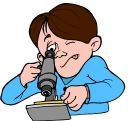
Worksheets and No Prep Teaching Resources
Reading Comprehension Worksheets
Rocks and Minerals

Rocks and Minerals
 Worksheets and No Prep Teaching Resources Reading Comprehension Worksheets Rocks and Minerals |
 Rocks and Minerals |
| edHelper's suggested reading level: | high interest, readability grades 5 to 6 | |
| Flesch-Kincaid grade level: | 5.57 |
|
Minerals
By Patti Hutchison |

|
 1 Minerals. They are all around us. We eat them, wear them, and build with them. What is a mineral? How are they identified? What can we do with them?
1 Minerals. They are all around us. We eat them, wear them, and build with them. What is a mineral? How are they identified? What can we do with them? |
Create Weekly Reading Books
Prepare for an entire week at once! |
| Leave your feedback on Minerals (use this link if you found an error in the story) |
 |
Rocks and Minerals
|
 |
Special Education Science Materials for Teachers
|
 |
Science
|